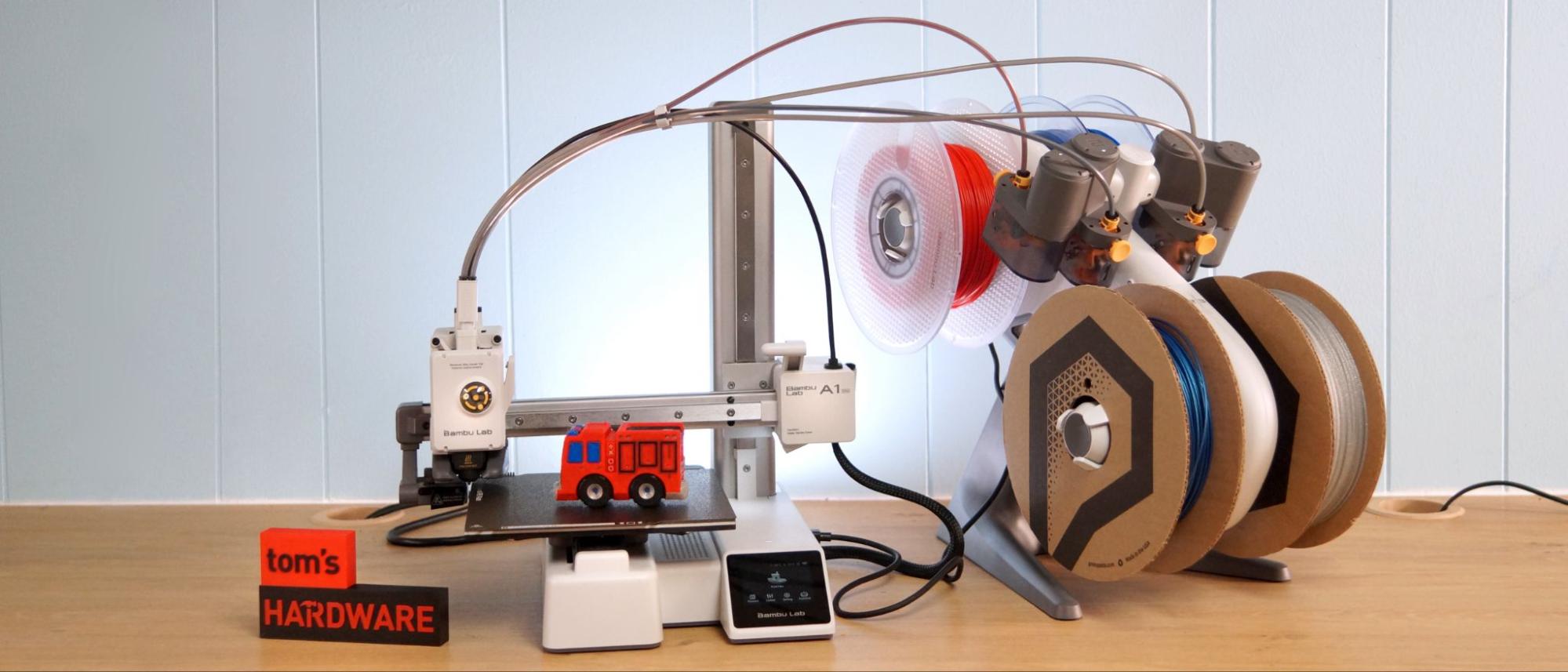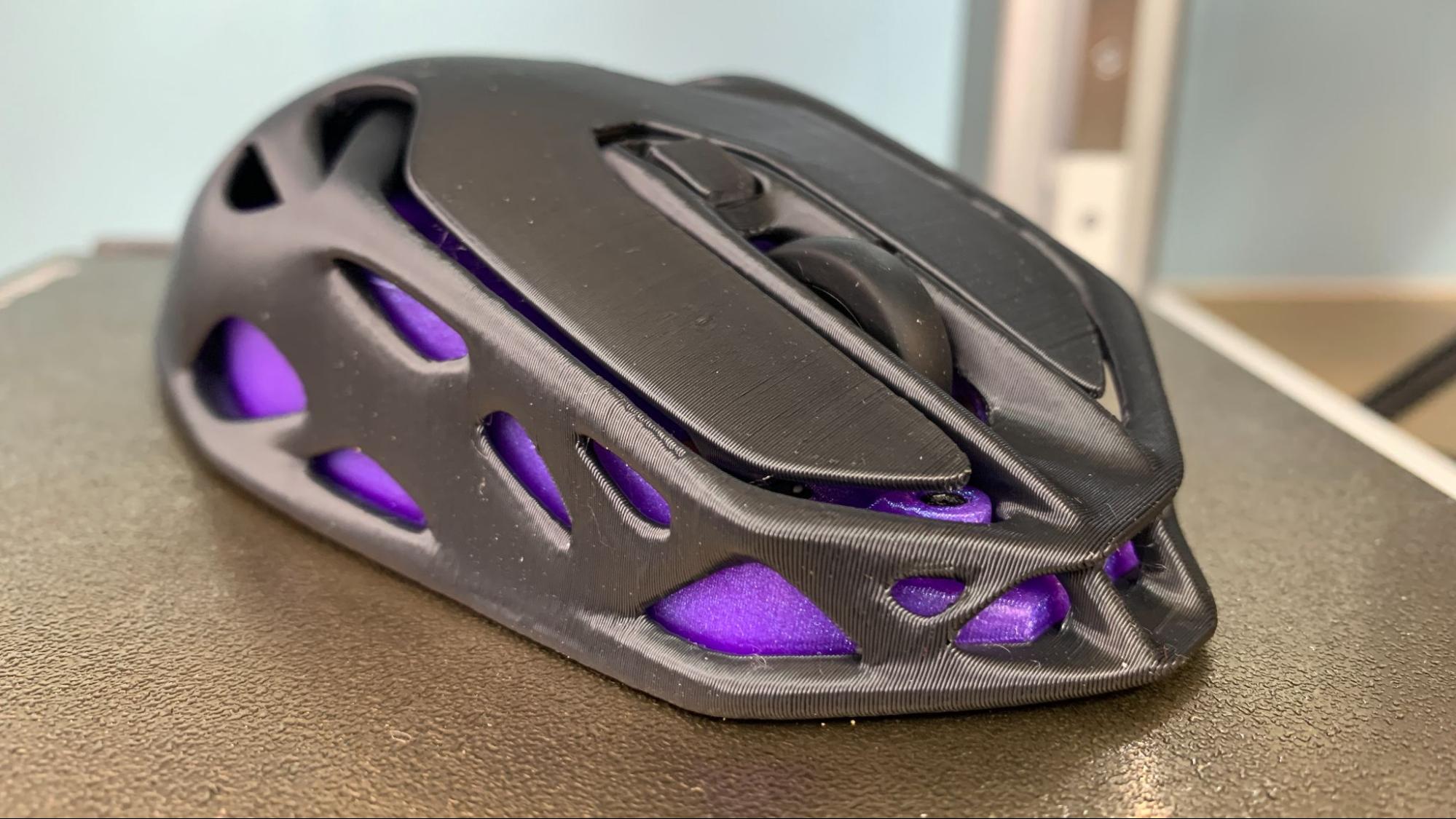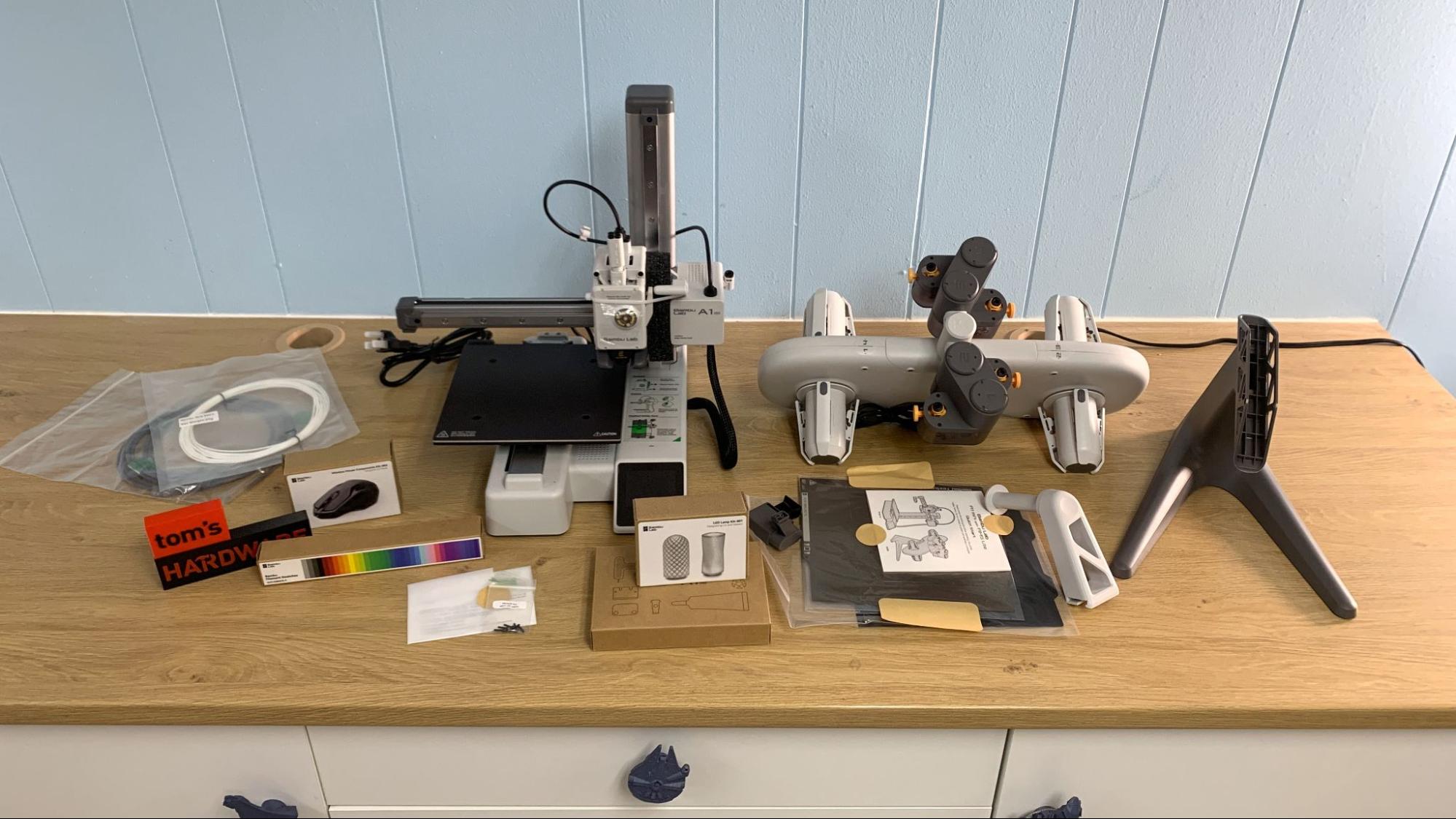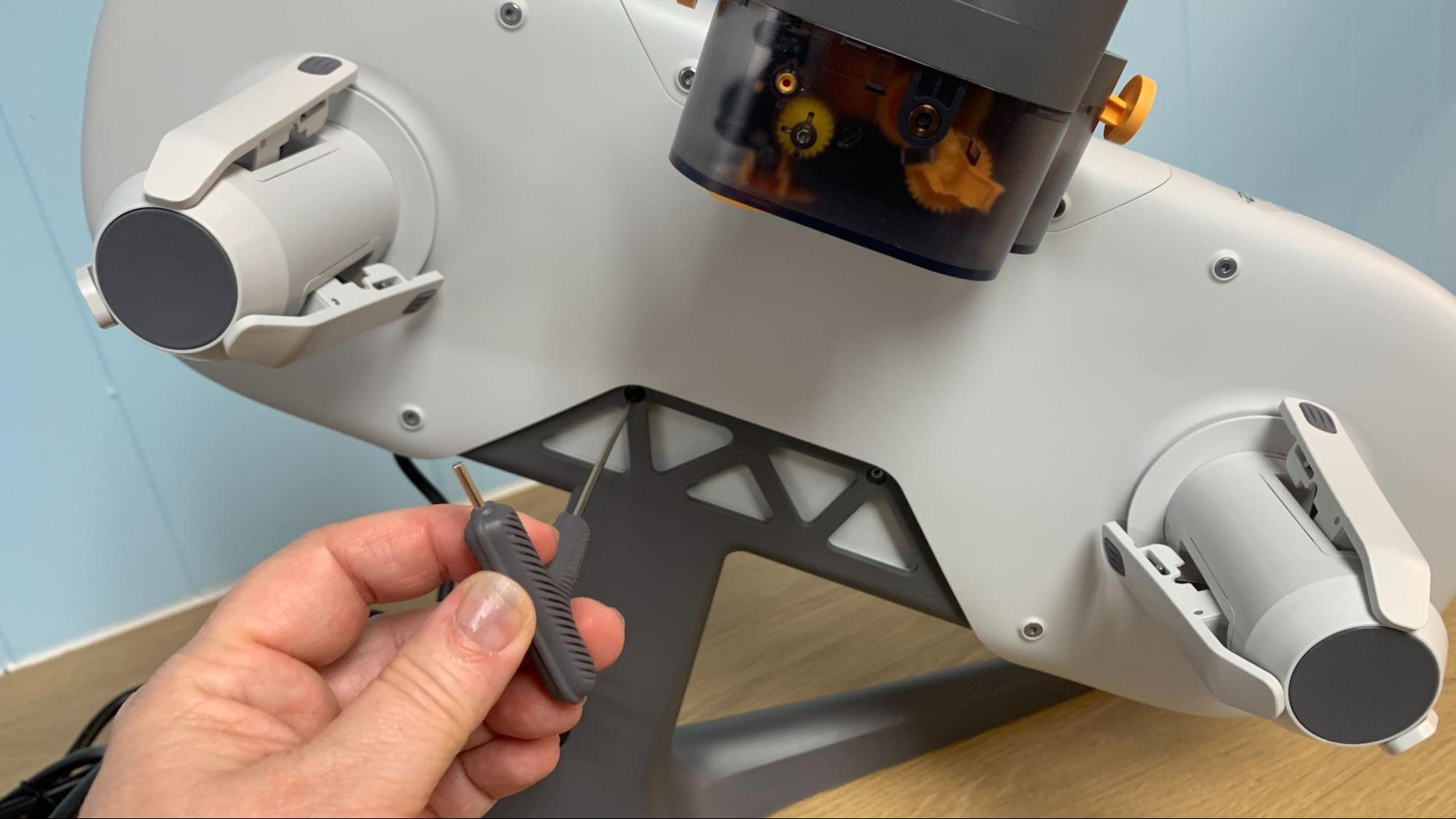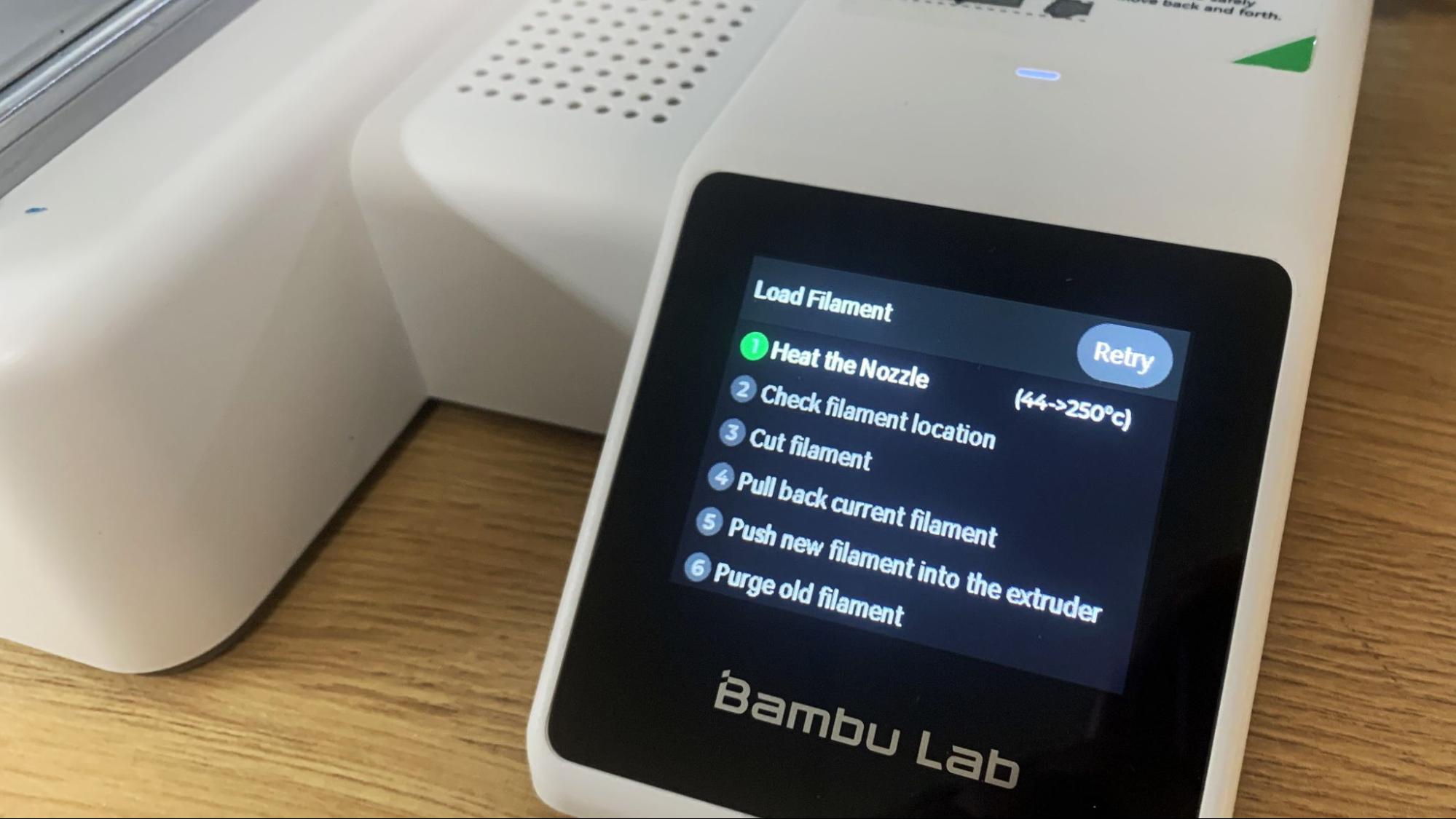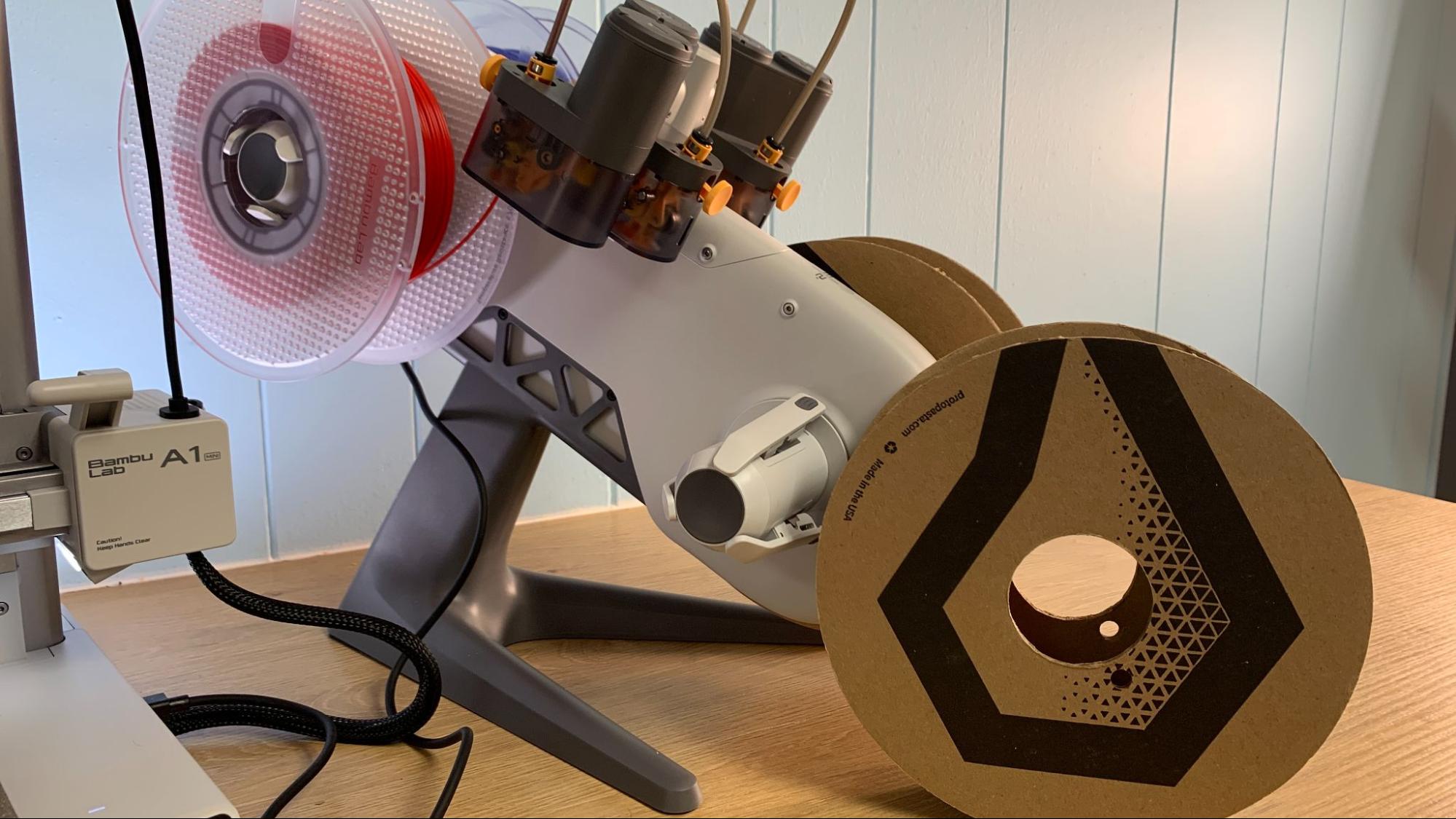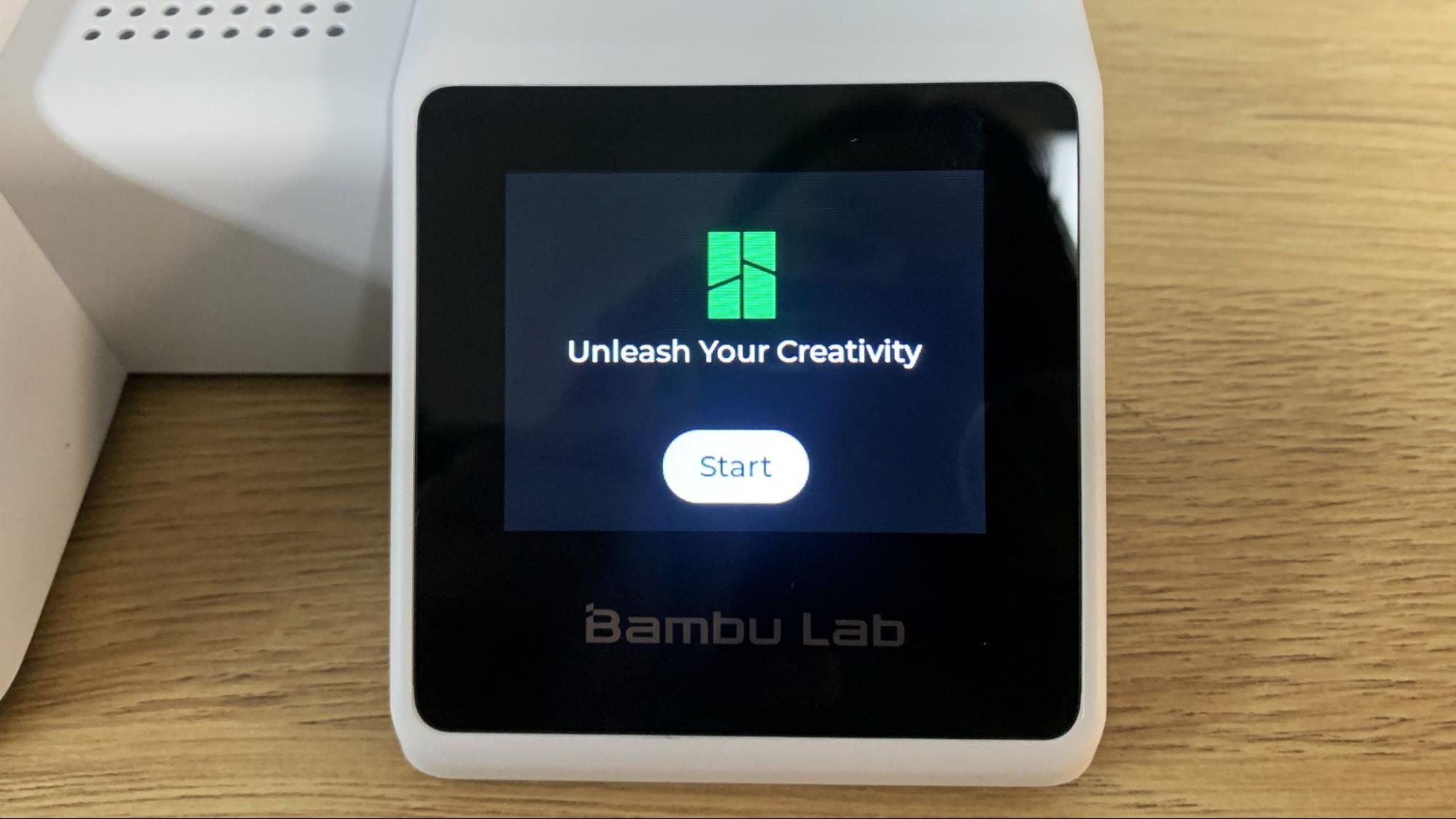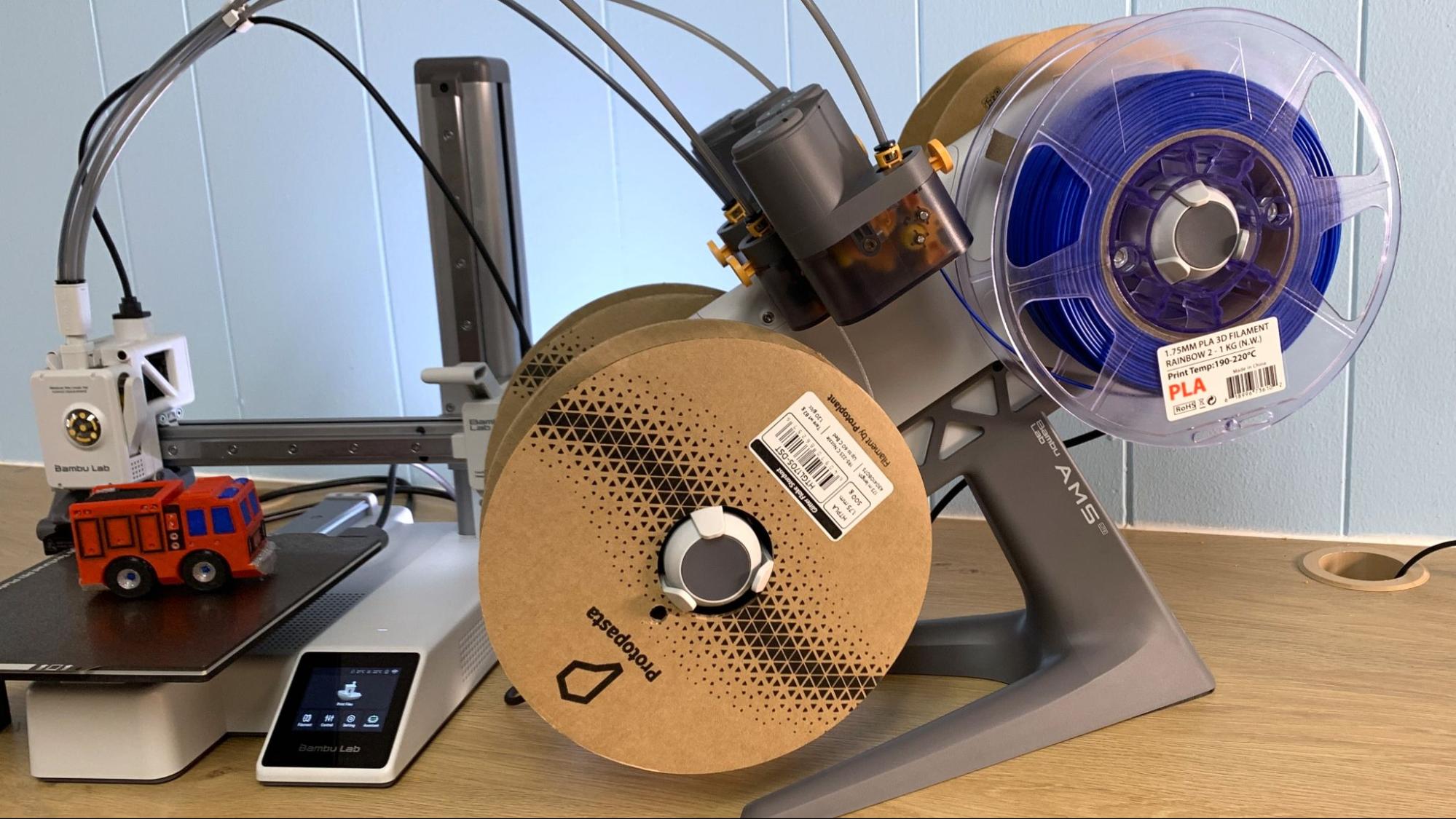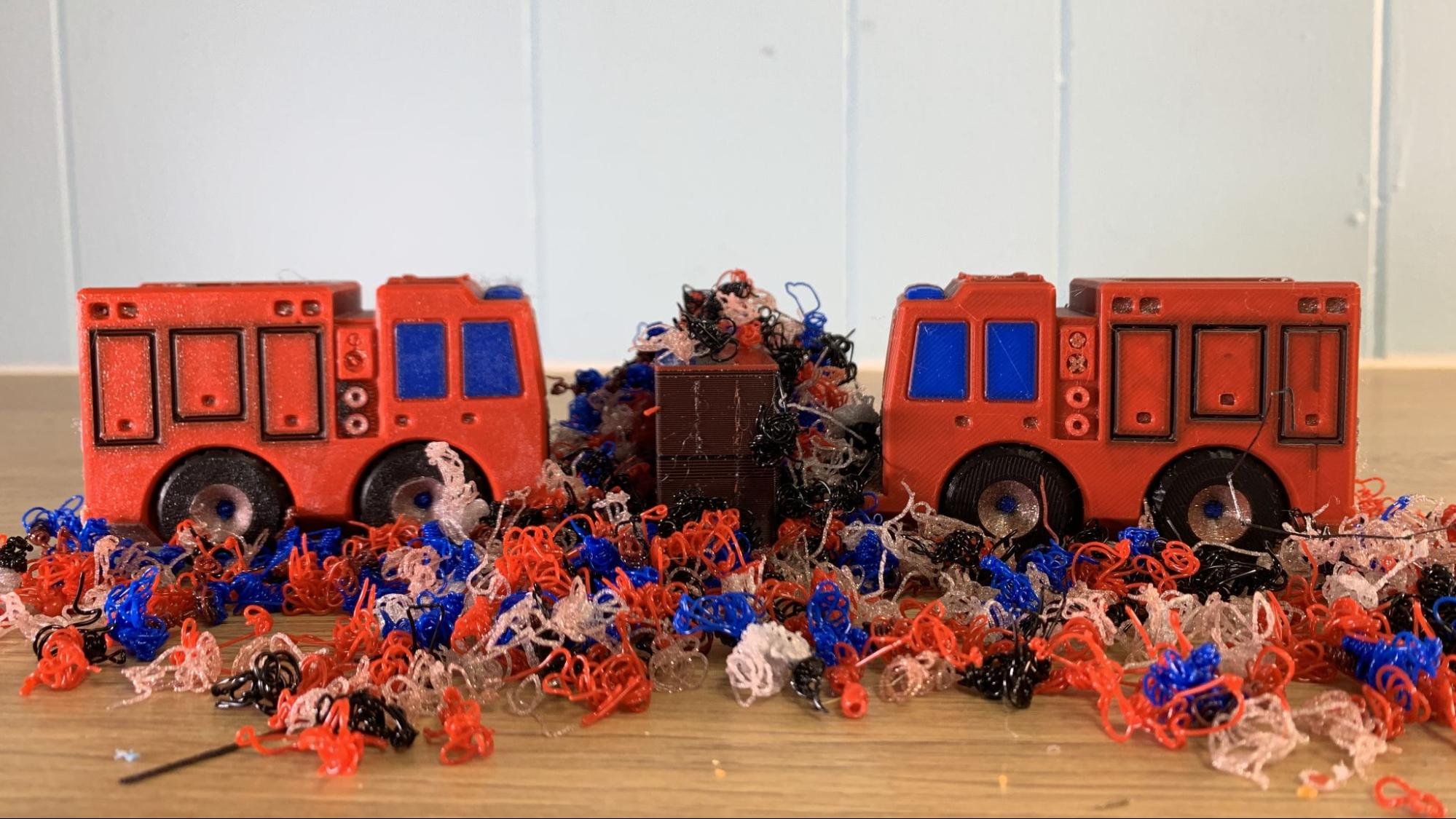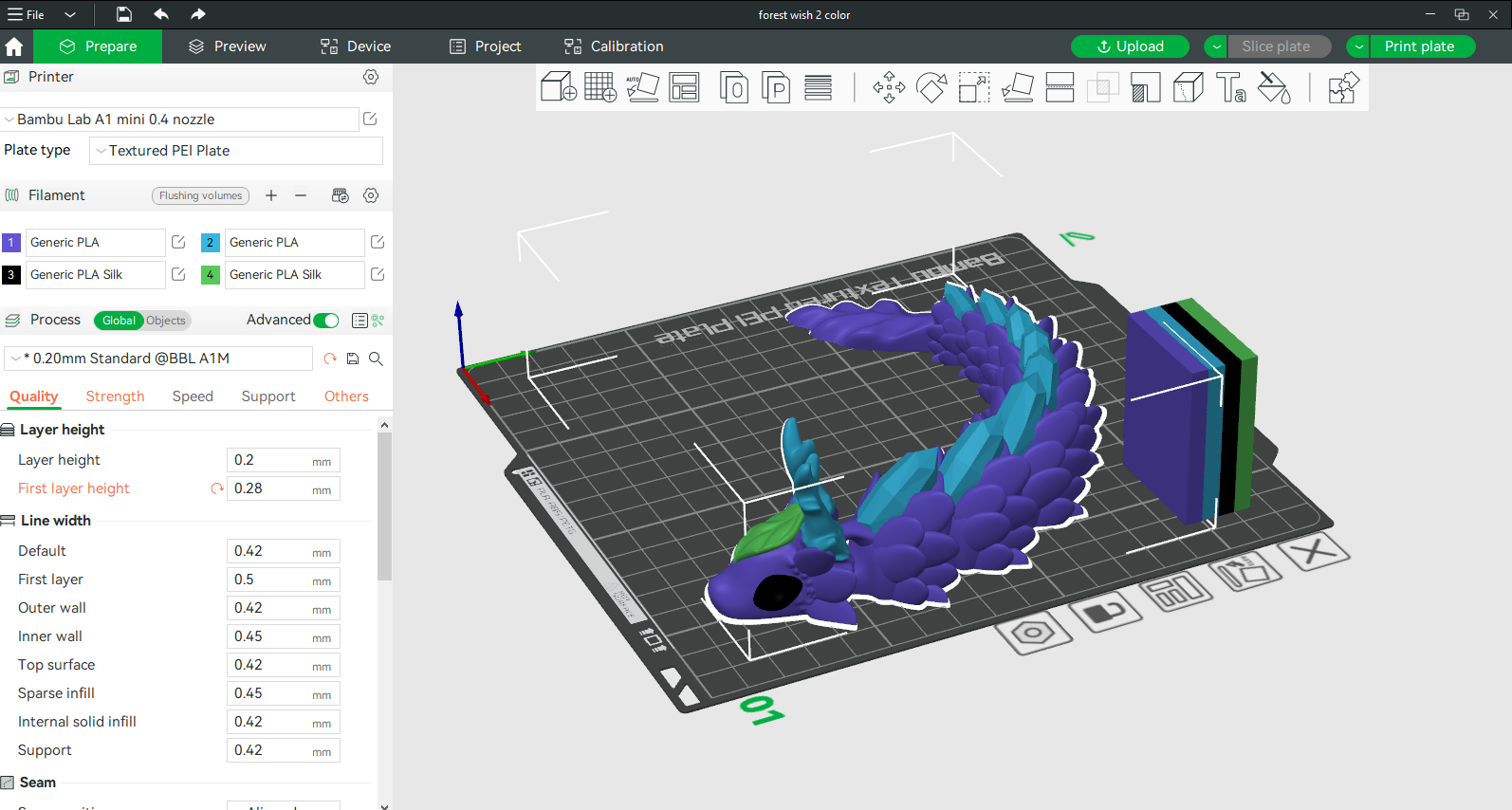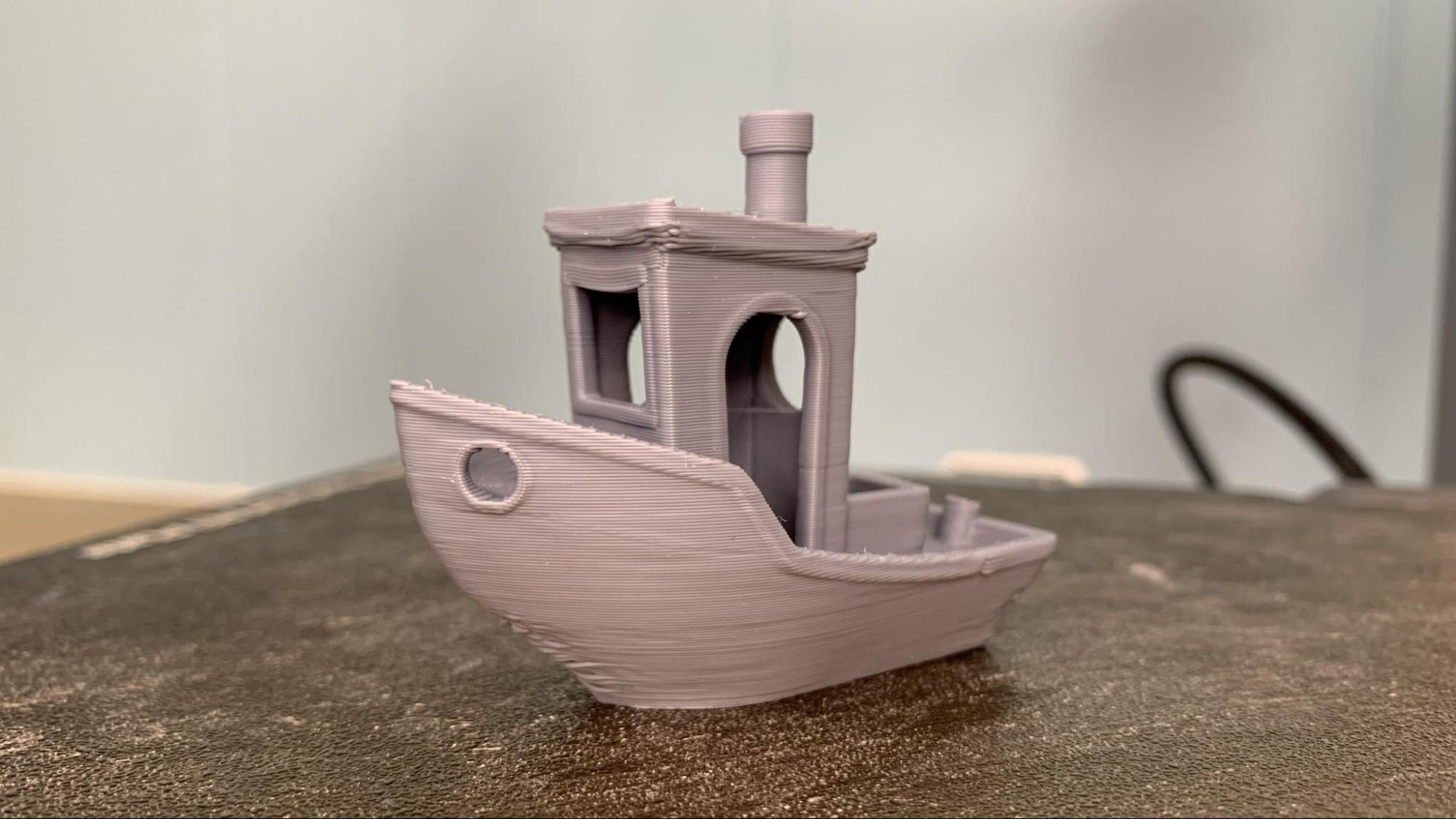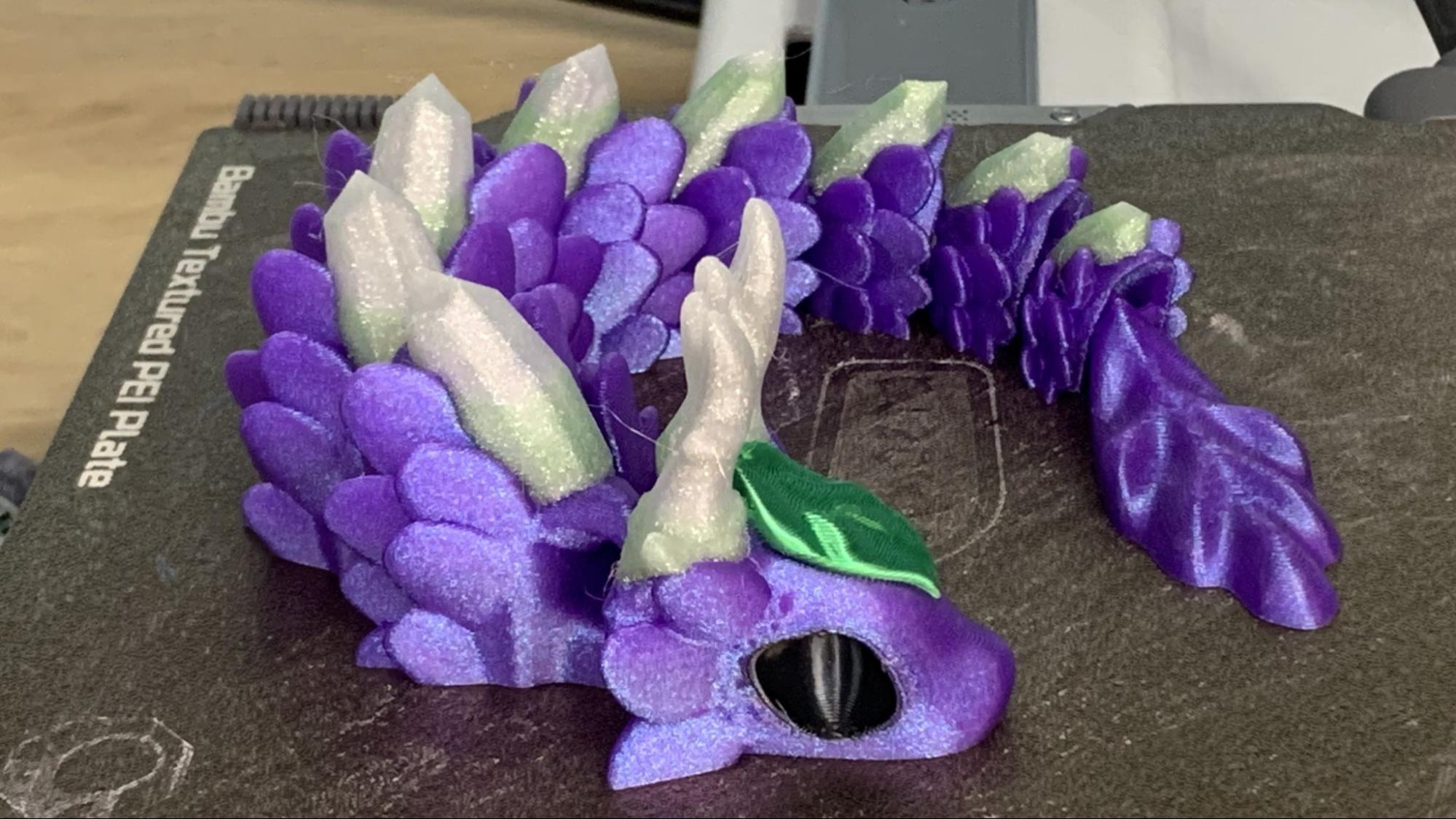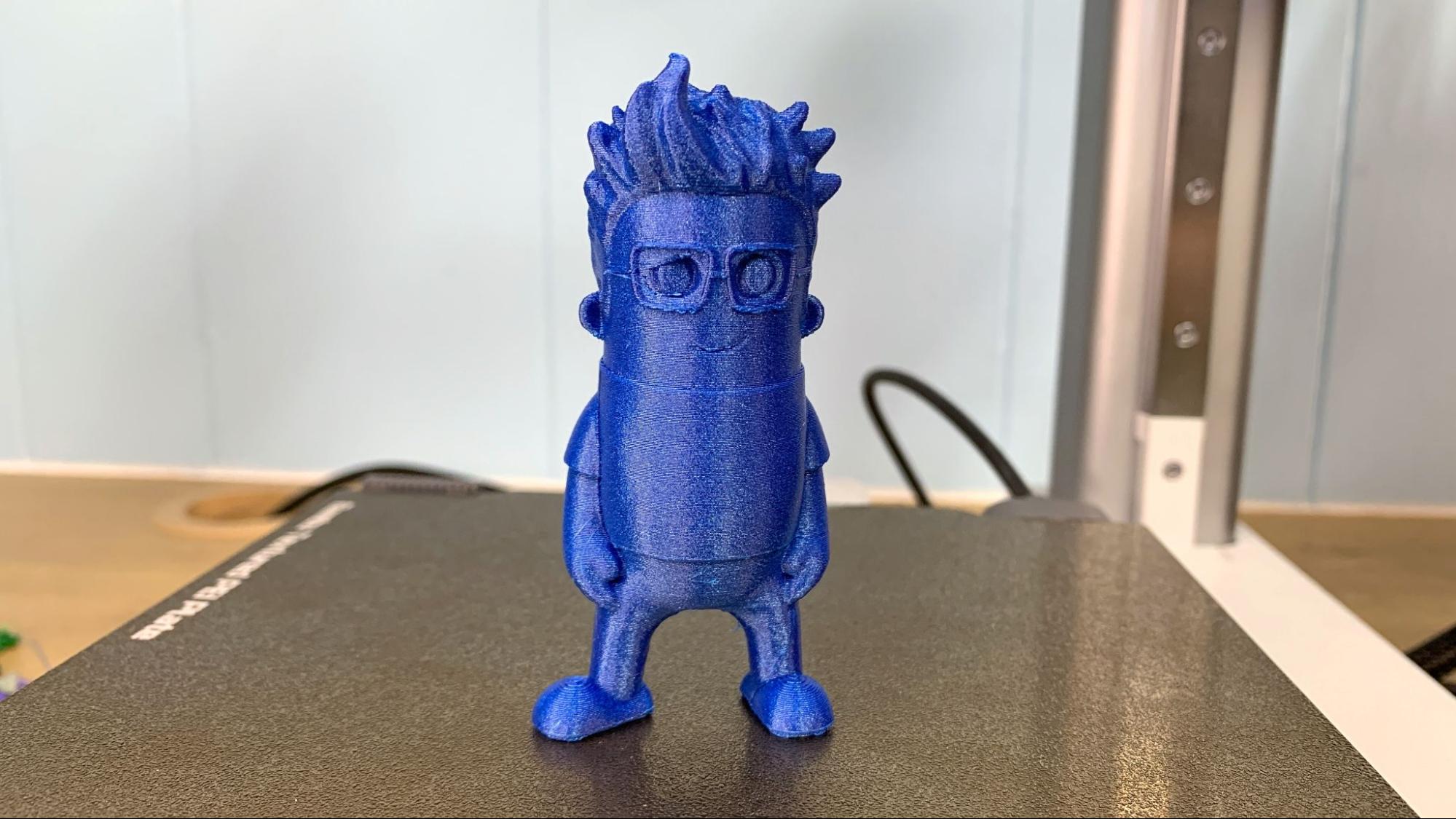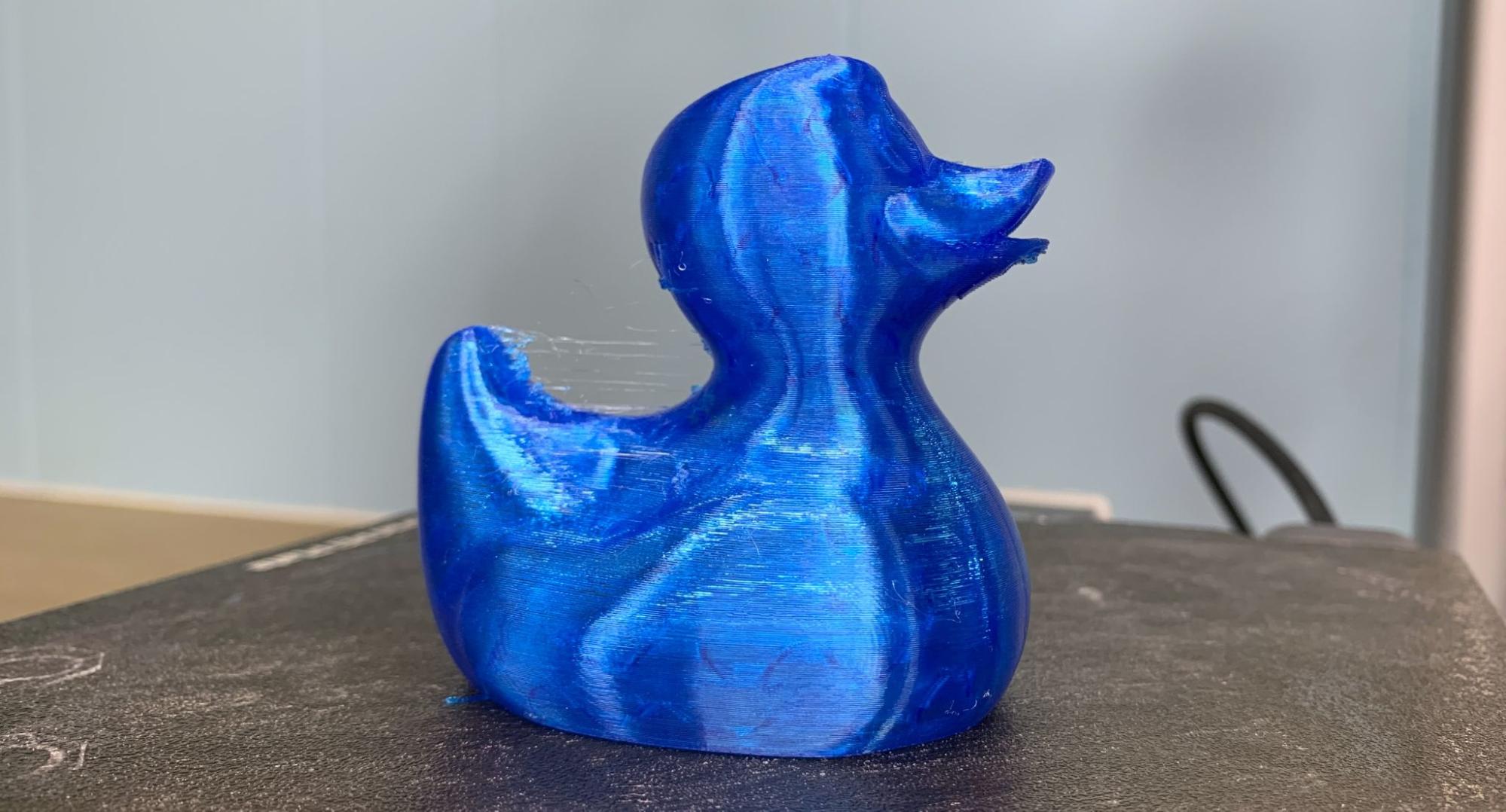Tom's Hardware Verdict
Bambu Lab’s budget bed slinger is fast, quiet and easy to use. The build size is small, but roomy enough for many practical prints and fun models. The optional AMS might be awkward looking, but it’s easier to maintain and prevents jams more than the original model.
Pros
- +
Speed
- +
Intuitive Interface
- +
Quick change nozzle
- +
Inexpensive AMS (optional)
- +
Direct Drive
- +
Auto bed leveling
- +
PEI coated flexible build plate
Cons
- -
AMS takes up a lot of space
- -
AMS flings waste
Why you can trust Tom's Hardware
Bambu Lab surprised everyone by introducing the A1 Mini, an easy-to-afford bed slinger style 3D printer with a “lite” AMS (Automatic Material System). It may have disappointed rabid fans hoping for a larger machine, but it will thrill those with a smaller budget left out of the color craze started by the X1 Carbon.
Retailing at $299 for the printer and $459 for a combo package with an AMS Lite, the A1 Mini is half the price of a stripped down P1P Combo, yet packed with more features. It has an intuitive full color touch screen, quick change nozzles and an AMS unit less prone to jamming. The AMS also holds spools by the central core, making it compatible with more 3rd party filament.
Like its big brothers, the A1 Mini arrives 95% assembled, with a direct drive and steel tipped full metal hotend that can reach 300 degrees. It has a top speed of 500mm/s, but “only” half the maximum acceleration rate at 10,000mm/s², which is still enough to make it the fastest Cartesian printer we’ve reviewed.
Combo units will be shipping with a limited edition “mystery box” maker project to encourage users to try out Bambu Lab’s new MakerWorld file library. The box will have a small electronics project made with files located on Maker World. For example, our review unit came with the parts for a wireless mouse to print and build.
Specifications: Bambu Lab A1 Mini
| Build Volume | 180 x 180 x 180 mm (7 x 7 x 7 inches) |
| Material | PLA/PETG/TPU (up to 300 degrees) |
| Extruder Type | Direct Drive |
| Nozzle | .4 high flow |
| Build Platform | PEI textured spring steel sheet, heated |
| Bed Leveling | Automatic |
| Filament Runout Sensor | Yes |
| Connectivity | WiFi, Bambu-Bus, Micro SD |
| Interface | 2.4 Inch Touch Screen |
| Machine Footprint | 347 × 314 × 365 mm (13.6 x 12.4 x 14.4 in) |
| Machine Weight | 5.5 KG (12.1 lbs) |
Included in the box: Bambu Lab A1 Mini
We reviewed the A1 Mini Combo, so our unit came with the 3D printer and an AMS Lite on a stand. A cardboard toolbox held all the tools needed to assemble and maintain the printer, plus a pair of side cutters, a mystery project and sample tiles of Bambu Lab’s filament. There was also a small coil for running a test print.
Assembling the Bambu Lab A1 Mini
The Bambu Lab A1 Mini arrives mostly pre-assembled and only needs the filament wiper and spool holder installed and the Bowden tubes plugged in. The AMS unit snaps together quickly before being secured onto its stand.
Leveling the Bambu Lab A1 Mini
The Bambu Lab A1 Mini completely auto levels itself. It uses the nozzle as the probe so it can also set the z height for you. I had no problems with the settings and no need to make adjustments.
Get Tom's Hardware's best news and in-depth reviews, straight to your inbox.
Loading Filament in the Bambu Lab A1 Mini
The Bambu Lab A1 Mini can work from a single spool holder mounted directly on the machine.l or from four spools on the Lite AMS unit.
For a single spool you must push filament through the Bowden tube to the toolhead, then tap “load filament” on the main menu. The machine will take over from there and display a checklist on the screen so you can follow along.
For the AMS, simply push spools onto the motorized spindles and poke the filament into the intake. The machine will detect the filament and draw it in.
The AMS has an RFID reader, which allows it to read tags on Bambu Lab branded filament. These tags will tell the machine what type and color of filament is on each spindle. If you’re using untagged filament, or the single spool holder, you’ll need to enter this information manually. This can be done directly on the A1 Mini or in Bambu Slicer.
Design of the Bambu Lab A1 Mini
The Bambu Lab A1 Mini is a cantilever designed 3D printer with a modern, IKEA like style. It is extremely easy to use with a touch screen interface that contains guides to show you how to run the machine.
On its own, the A1 Mini is a very compact, high speed 3D printer. It has a direct drive with a 300 degree hot end and quick swap nozzles. The nozzles contain the heat break and cooling fins, which like the Prusa MK4 nozzles, prevent leaks from haphazard user installation. Unlike previous Bambu Lab machines, these nozzles are literally a cinch to install as they’re held in place with a strong magnet and metal buckle. There’s no screws, wiring or messy thermal paste involved with the process.
The toolhead has significantly slimmed down when compared to the one on a P1S, P1P or X1 Carbon. It has a similar filament cutter, though this one is triggered by a more obvious “finger” on the machine’s right side. The filament hub is no bigger than a pencil and is permanently mounted on top whether you need it or not.
The A1 Mini has a silicone brush near the back of the plate for wiping the nozzle before it taps the bed for calibration. It also has a weird little tray at the end of the X gantry for depositing purged filament, which it then flings off to the side in a hilarious fashion. These are easily collected with an open filament box next to the printer. As messy as it might seem, it’s better than the chute on the larger machines, which can clog up the printer if not kept clear.
The A1 Mini has both a filament run out sensor in the tool head and an odometer in the AMS to detect broken filament and tangles. It also has a camera for monitoring and recording time lapses, but there is no AI programming to detect print fails. The camera has a small light and a manual privacy shutter. The lens is wide angle and can record a pretty big chunk of your room beyond the build plate, so I would advise putting up a screen or parking it in a corner if you don’t want a lot of background movement recorded.
Like other printers from Bambu Lab, when the A1 Mini has an error it tries to help you diagnose the problem by issuing an error code. The code is written out and can be displayed as a QR code leading to the Bambu Wiki, a knowledge base for operating any Bambu printer. The Wiki will help you identify and fix the problem, often with quick video tutorials.
Bambu Lab Automatic Material System (AMS) Lite
We received the A1 Mini Combo, which includes an AMS Lite module. The AMS Lite is made specifically for the A1 Mini (or perhaps an A1 line of printers?) and is not compatible with any other machine. Likewise, the A1 Mini does not work with the previous AMS unit. This is because the hub that controls which color is fed to the printer is mounted directly on top of the tool head.
The AMS Lite is not as clean looking as the old AMS, with four Bowden tubes stretching from each spool to the tool head. However, this simplified version is much easier to unjam should brittle filament break in the tube.
Each spool is mounted on a spring-loaded spindle, which provides the necessary retraction. Since each color has its own Bowden tube, the A1 Mini only needs to pull the filament a few inches until it's clear of the toolhead, not all the way back to the AMS Unit. Each spool also gets a motor to push filament to the tool head. This new system solves the problem of cardboard spools with crushed edges, spools that are too wide or too tall, and spools that are too light. I hope this method is carried over to the next phase of enclosed Core XY units.
There are drawbacks to using the AMS. The printer wastes an amazing amount of material when it cleans out the nozzle between colors. The waste can be reduced with tuning, but takes time and patience. The slicer will tell you exactly how much it will use before you start a print. For this pair of fire trucks it took 166 grams of filament (46 black, 68 red, 41 silver, and 11 blue) to print the trucks. It “flushed” 115 grams after tuning, down from 200 grams. Though it looks like I over tuned it, as the black bleeds through the red a big and the silver on the wheels are a bit pink.
The second drawback is loss of speed. The printer needs to pause between layers to purge filament then do a nozzle wipe on the purge tower. This pair of trucks took 22 hours and 25 minutes to print in four colors at the standard 200mm/s speed. As a single color it would only take 4 hours and 19 minutes to print.
Preparing Files / Software
Bambu Lab has its own custom slicer, which is a fork of PrusaSlicer. You’ll need to use Bambu Slicer or the open source OrcaSlicer with any Bambu printer because it can’t read plain gcode – it uses 3mf instead. The slicer is also the primary means of transferring files via Cloud service or local LAN to the printer. Of course, you can also place files right on the SD card and walk them to your printer.
Bambu Slicer is also the “paint” program you need to assign color to your prints. The device tab allows you to talk directly to the printer to define the filaments in the AMS, heat up the printer and control the speed.
It has a wide range of presets for filament from both Bambu Lab and other manufacturers. I’ve found these presets to be incredibly helpful and accurate.
Bambu Lab released Maker World at the same time as the A1 Mini. This is a file sharing website with cloud slicing abilities, which lets you send models from the website directly to the printer from a computer or mobile device. Slicing is done behind the scenes, using parameters uploaded by the designer or other users – your choice. Maker World also takes information from your printer and AMS to confirm bed size and filament type.
Printing on the Bambu Lab A1 Mini
The Bambu Lab A1 Mini has a top speed of 500mm/s, but the default slicer speed is in the 200-300 range. It has excellent input shaping to tame vibrations and eliminate ringing.
The printer arrived with several prints preloaded. You’ll definitely want to shop for filament before bringing this machine home, especially if you plan on doing a lot of AMS printing. We have a guide with our favorite filaments for 3D printing here.
I ran an amazingly-fast 19 minutes 15 second Benchy using Speed Boat Rules (2 walls, 3 top and bottom layers, 10% grid infill, a .25 layer height and .5 layer width). The layers are smooth throughout most of the print, without any ringing or layer shifts. It gets a little sloppy on the overhangs and around the bow of the ship from lack of cooling, but considering this print should take 46 minutes with default settings, the print is fantastic. We printed it in ordinary gray Inland PLA.
To show what the Bambu Lab A1 Mini can do when under normal conditions, I printed this Forest Wish Spirit using default settings of 200-300mm/s and a .2mm layer height, taking 9 hours and 20 minutes to print. I “painted” the colors myself in BambuSlicer. The print needed to be shrunk to 85% to fit on the build plate, but turned out beautifully smooth with no visible layer lines or ringing. There is a tint of green in the lower part of the crystals from not purging enough, but I rather like the effect. I printed it in CookieCad Witchcraft Shiny Iridescent (purple) and ProtoPasta Stardust Glitter for the crystals.The green and black accents are Polyalchemy silks, which are currently unavailable – but are being brought back to the market by Printed Solid very soon.
For a PETG test, I printed the new Mini Joel – with fingers! – in the YouTubers’ favorite color, ProtoPasta High Five Blue. The print is clean and crisp and printed without any supports. This print took 1 hour and 16 minutes to print with a .2 layer high and 200-300 mm/s speed. A normal speed printer, like the Neptune 3 Pro, would take about 3 hours to print the same model.
For TPU testing, I printed this rubber duck from Thingiverse. I did have to crop off the rounded bottom a bit because the overhang was too much for TPU and I didn’t want to use supports. Once that was fixed, the A1 Mini handled TPU very well.
Reminder – the AMS cannot handle TPU so the spool was mounted on the single spool holder directly on the machine. There’s a little bit of stringing and clumps of filament on the tail, but it all wiped off without problem. Bambu Slicer slowed this print down to 5 hours and 6 minutes, using a .2 layer height.
Bottom Line
The Bambu Lab A1 Mini is the fastest bedslinger we’ve clocked so far, and nearly as fast as Bambu’s larger Core XY machines. It’s much easier to use than Bambu’s larger machines but lacks the build volume. The AMS takes up a bit more space than we’d like, but is so much easier to use and maintain, it’s worth the counter space.
At $459 for the combo, this machine is a natural for budget minded makers who want to dabble in color. The stand alone A1 Mini is also an excellent choice for beginners looking for an affordable, compact machine that just works right out of the box.
If you’re interested in a larger color printer that can handle more materials, check out the fully enclosed Bambu Lab P1S for $949 when bundled with an AMS. If you just want speed and a bigger build plate, check out the similarly priced Sovol SV07 that runs vanilla Klipper for $339.
MORE: Best Budget 3D Printers
MORE: Best Resin 3D Printers
MORE: Best 3D Printers

Denise Bertacchi is a Contributing Writer for Tom’s Hardware US, covering 3D printing. Denise has been crafting with PCs since she discovered Print Shop had clip art on her Apple IIe. She loves reviewing 3D printers because she can mix all her passions: printing, photography, and writing.
